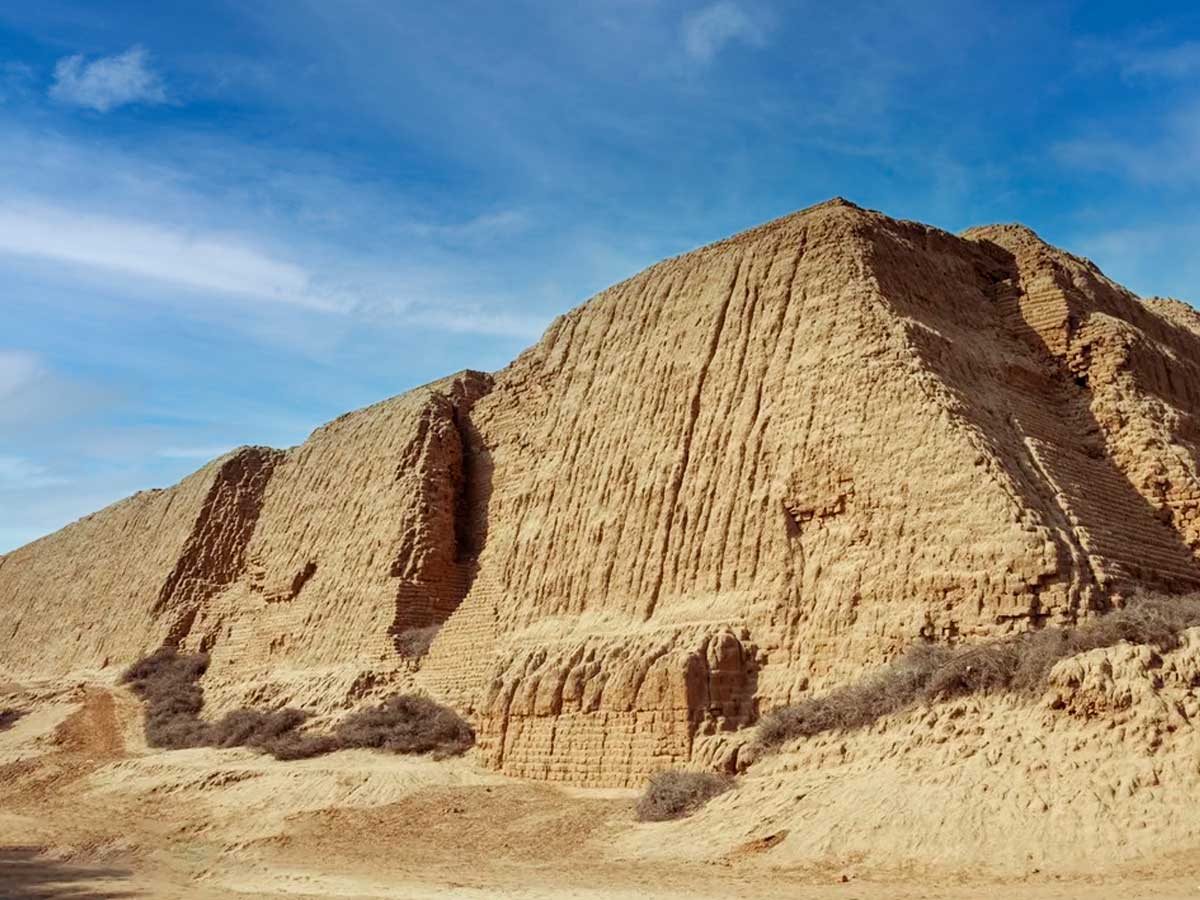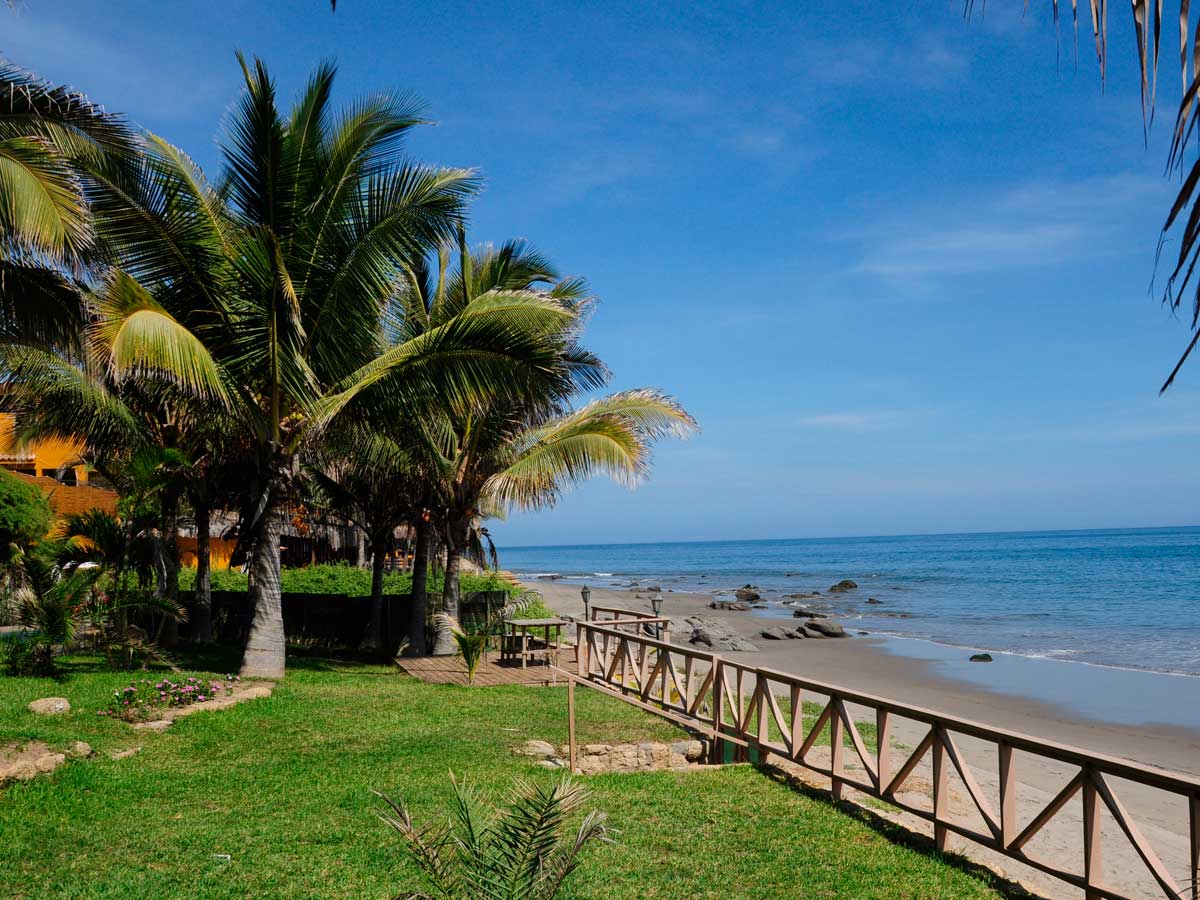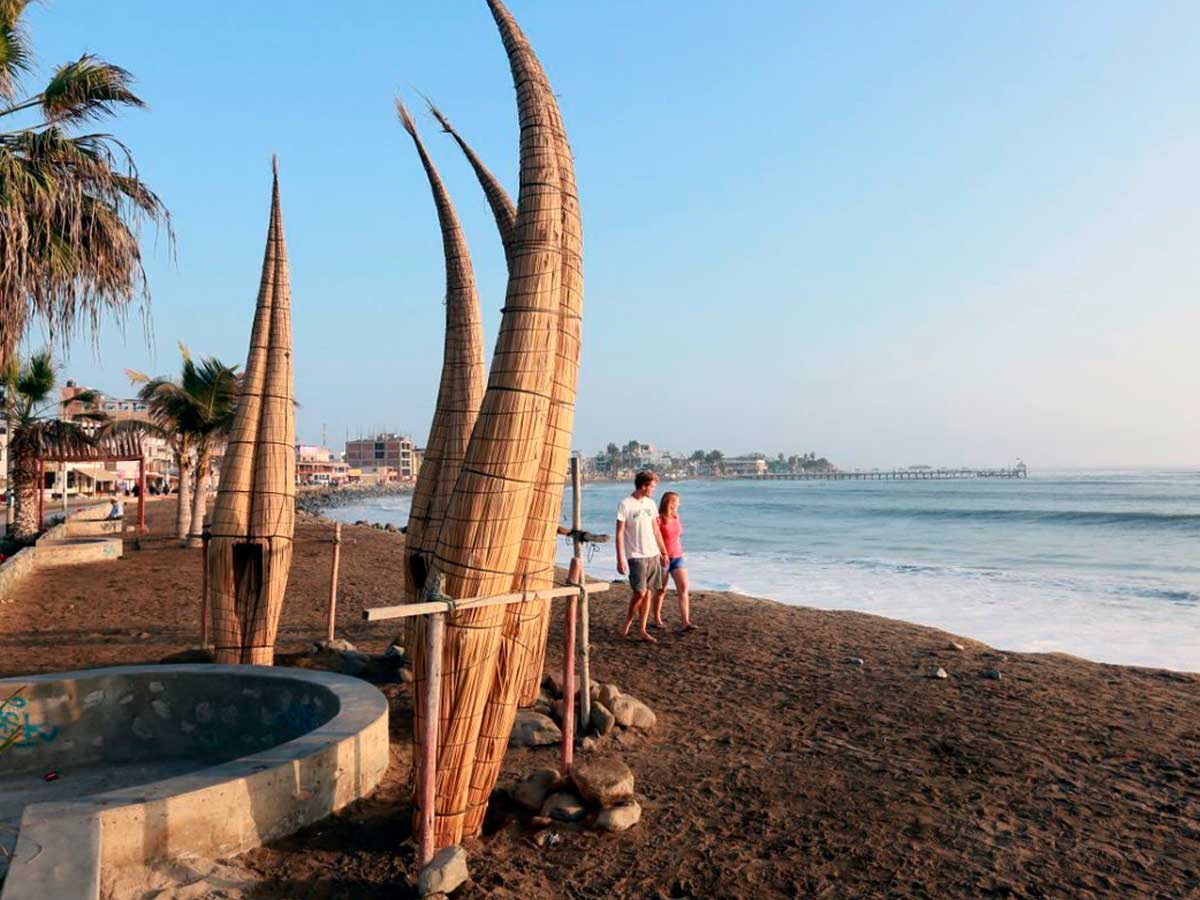
This long strip of land stretches from the mangrove forest and sunny beaches of Tumbes to the warm desert valleys south of Trujillo. The city of Trujillo is also the base for visiting sites such as Chan Chan, Huaca del sol y de la luna, and Huanchaco. Treasures recovered from the Moche, Sican, and Chimu cultures can also be seen in museums a highligth being the Museo Tumbas Reales de Sipán in Lambayeque. The Northern Desert is also home to picturesque sea towns, such as Huanchaco and Mancora, and Peru's most attractive beaches on the coast off Piura and Tumbes, the country's northernmost region.
Here, anumber of reserves protect the endangered species that live in endemic and unique ecosystems.
The Peruvian landscape boasts a stunning array of diversity and beauty. Similar to the southern region, a remarkable transformation in terrain occurs as one journeys from the coastal desert to the northern Andes and the jungle regions bordering Brazil. The northern regions are home to numerous endemic bird species, including the renowned Spatuletail Hummingbird in the Amazonas region.

The pre-Incan archaeology in Peru is truly remarkable, with notable sites such as the adobe city of Chan Chan and the citadel of Kuelap, as well as Chavin de Huantar in close proximity to Huaraz.
The cloud forest in the Andes and the jungle surrounding Tarapoto or Iquitos offer an abundance of natural wonders, ideal for trekking and hiking, as well as exploring lakes and waterfalls.
Archaeological Marvels: Northern Peru is home to several ancient archaeological sites that provide insights into the pre-Columbian civilizations of the area. The most famous of these is the city of Chan Chan, the largest adobe city in the world and a UNESCO World Heritage site. The nearby Huacas del Sol y la Luna, as well as the El Brujo archaeological complex, are also must-visit sites that showcase the ancient Moche culture.
Charming Colonial Cities: Cities like Trujillo and Cajamarca feature well-preserved colonial architecture, including charming plazas, churches, and buildings dating back to the Spanish colonial era. Exploring these cities offers a glimpse into Peru's colonial history and architectural heritage.
Stunning Natural Landscapes: Northern Peru boasts diverse landscapes, from the arid desert coastline to the lush valleys and high Andes mountains. The region is home to impressive geological formations, including the Gocta Waterfall, one of the tallest waterfalls in the world. Hiking and exploring the natural beauty of the region can be a rewarding experience.
Culinary Delights: Peruvian cuisine is celebrated globally, and Northern Peru is no exception. The region offers its own unique dishes and ingredients, often influenced by indigenous traditions. You can savor local specialties such as ceviche, cuy (guinea pig), and dishes featuring Peruvian staples like potatoes and corn.
Traditional Festivals: Northern Peru hosts a variety of colorful and vibrant festivals throughout the year. These festivals often blend indigenous and colonial traditions, showcasing the rich cultural heritage of the region. The Carnaval de Cajamarca and the Marinera dance festival in Trujillo are examples of events that draw visitors from near and far.
Less Crowded Tourism: While places like Trip to Cusco and Machu Picchu in southern Peru draw large crowds, Northern Peru tends to be less crowded with tourists. This can provide a more authentic and immersive experience, allowing you to interact more closely with local culture and communities.
Surfing and Beaches: For beach lovers and surf enthusiasts, the Northern Peruvian coast offers excellent waves and beautiful beaches. Locations like Mancora are known for their surf breaks and relaxed beach vibes.

Handicrafts and Artisan Traditions: Northern Peru is known for its vibrant handicrafts and artisan traditions. Markets in cities like Chachapoyas and Cajamarca offer unique textiles, pottery, and other handmade goods that make for memorable souvenirs.
Warm and Hospitable People: Peruvians are known for their warmth and hospitality, and this is certainly true in Northern Peru. Engaging with local communities and learning about their way of life can be an incredibly rewarding experience.
Off-the-Beaten-Path Exploration: If you're the type of traveler who enjoys exploring lesser-known destinations and uncovering hidden gems, Northern Peru is a fantastic choice. The region offers a sense of adventure and discovery that can lead to truly unforgettable experiences.
If so, or if you are seeking to amalgamate your time in the northern region with a visit to Machu Picchu and a tour of the southern region, there are still several exceptional alternatives available. You may opt to embark on a four-day excursion to the North coast of Peru, which boasts a plethora of archaeological sites. Alternatively, you may choose to spend four days exploring the Amazon, which encompasses the citadel of Kuelap and the waterfall of Gocta.
Northern Peru experiences similar seasonal patterns to southern Peru, with varying weather conditions depending on the region you visit, whether it be the Coast, the Andes, or the Amazon.

In the Andes, the rainy season spans from November to April, while the dry season lasts from May to October. During the dry season, temperatures can be hot during the day and cool at night, necessitating the use of protective gear such as hats, sunscreen, and mosquito repellent. Conversely, the rainy season presents an ideal opportunity to explore the awe-inspiring waterfalls that abound in the region.
Along the coast, the weather is generally pleasant, with mild, warm, and sunny conditions prevailing throughout the year, except during the Peruvian summer months of December and January when temperatures can be quite high.
In the Peruvian Amazonia, particularly around Tarapoto and Iquitos, rainy periods occur year-round, but this should not deter visitors from exploring these regions.
